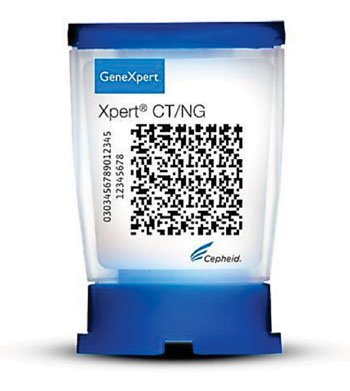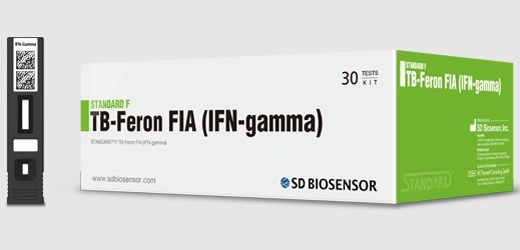Rapid Diagnostic Testing Evaluated for Chlamydia and Gonorrhea
By LabMedica International staff writers
Posted on 23 Nov 2016
Prolonged turnaround time of Neisseria gonorrhoeae (NG) and Chlamydia trachomatis (CT) test results may delay time to notification and treatment of test-positive patients and result in unnecessary antimicrobial use in test-negative patients.Posted on 23 Nov 2016
Nonculture methods, including nucleic acid amplification tests (NAAT), are widely available for the detection of genital NG/CT and are the preferred diagnostic tests, but with traditional NAAT, many health care facilities have a turnaround time between 1 and 4 days for results of NG/CT. This prolonged time to results impacts time to patient and partner notification as well as treatment for test-positive patients who do not receive empiric therapy.

Image: The GeneXpert CT/NG rapid diagnostic test cartridge (Photo courtesy of Cepheid).
Scientists at the Cleveland Clinic (Cleveland, OH, USA) and their colleagues evaluated the impact of NG/CT rapid diagnostic testing (RDT) in an urban emergency department (ED) on treatment appropriateness, time to notification, and cost. They tested 200 patients in December 2013–January 2014 by traditional methods and these were compared with 200 patients in December 2014–January 2015 by RDT. Samples utilized by the ED included male urine or urethral samples and female endocervical samples.
Traditional testing was performed using the Gen-Probe Aptima Combo 2 for NG/CT Assay (Hologic, Bedford, MA, USA). The RDTs were performed using the GeneXpert CT/NG assay (Cepheid, Sunnyvale, CA, USA). The RDT was validated compared with the traditional testing method with sensitivity and specificity. A total of 53 patient specimens were collected and tested including male and female first-catch urine samples, patient-collected vaginal swabs, and provider-collected endocervical swabs.
The scientists found that there was a significant increase in treatment appropriateness in the RDT group, 72.5% versus 60% and time to results notification was significantly faster with a median of 17.4 versus 51.5 hours. Availability of test result prior to discharge was associated with increased treatment appropriateness. They also reported that the RDT would save approximately USD 37,000 annually. Of the 200 patients tested in the RDT group, only 40 (20%) were present in the ED at the time their results became available.
The authors concluded that implementation of a RDT for NG/CT in the ED significantly improved initial treatment appropriateness by sparing unnecessary antimicrobial use, decreased time to patient notification, and resulted in cost savings. Having test results prior to patient discharge from the ED was independently associated with receiving appropriate treatment. Interventions to increase the proportion of tests resulted prior to discharge are warranted to improve utilization of the RDT. The findings of this evaluation support the use of the NG/CT RDT as a component of antimicrobial stewardship in the ED. The study was published on October 18, 2016, in the journal Diagnostic Microbiology and Infectious Disease.
Related Links:
Cleveland Clinic
Hologic
Cepheid














